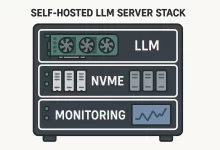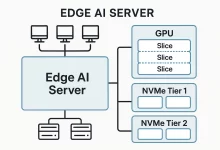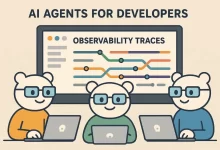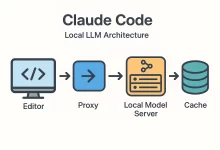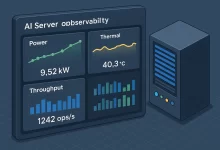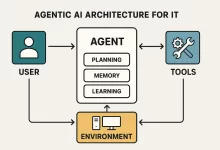n8n AI workflow success comes down to one idea: your bots must talk like machines, not poets. Early on, I wired an LLM into a customer-support pipeline and felt invincible—until my database node choked on a heartfelt paragraph. Lesson learned. Since then, I’ve treated each n8n AI workflow like a factory line: reason, format, validate, then act. Clean data or no deal.
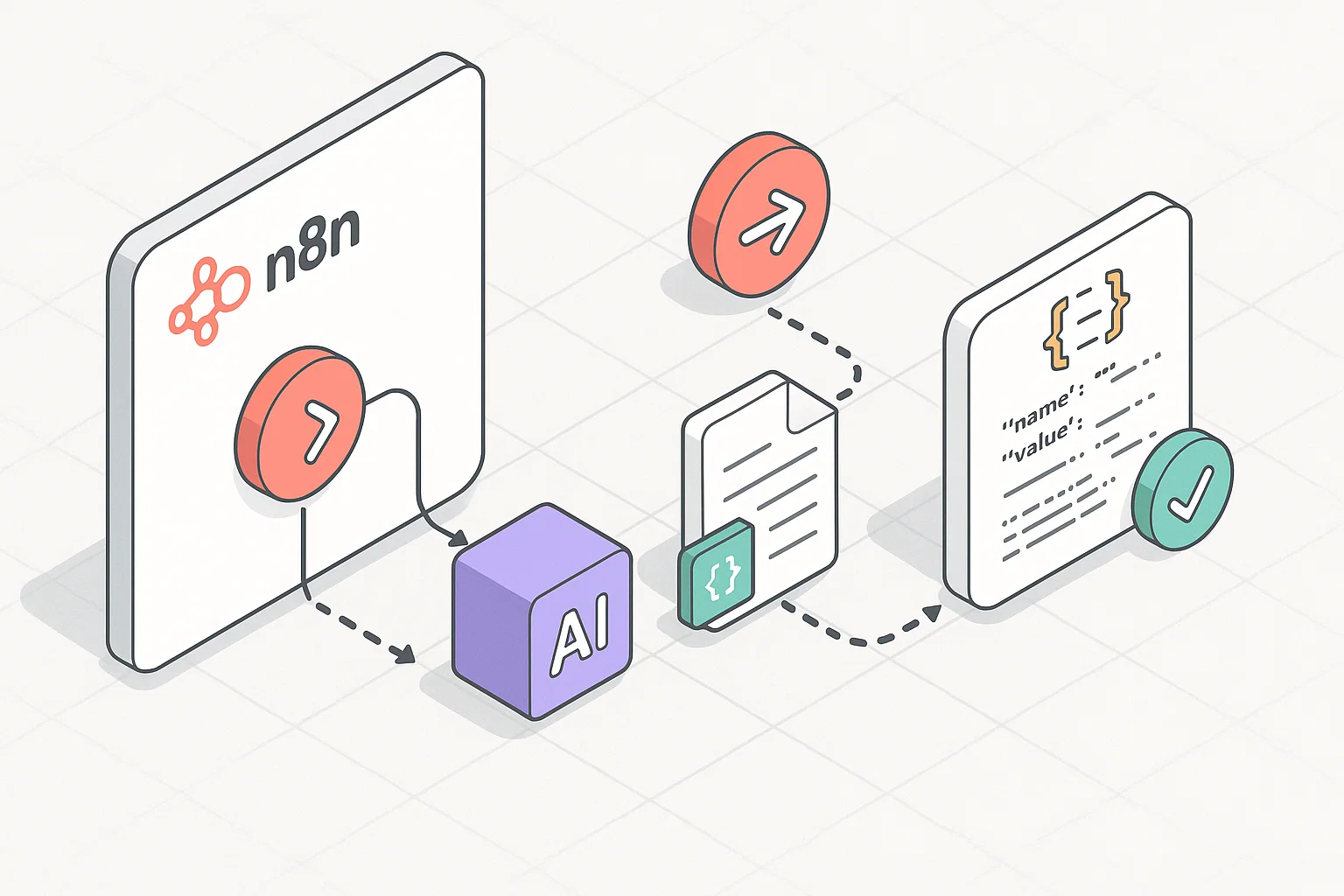
Power Move #1 — Mindset shift: structure first, prose later
Write like this on the whiteboard: “We produce JSON first.” In a n8n AI workflow, prose belongs at the edges (notifications, previews), never the core. Push the LLM to emit strictly typed objects, then build any human-friendly copy from those objects. This flips the default: no more brittle regex, no more guessing.
Power Move #2 — The canonical n8n AI workflow map
Here’s the map I keep reusing. It’s simple, durable, and scales:
- Intake (Webhook, Cron, Gmail, Forms).
- Reasoning LLM — think freely, plan steps, gather context.
- Formatter LLM — convert reasoning into a strict schema.
- Validator — JSON Schema or custom code gate.
- Branch — Switch/If on typed fields.
- Act — HTTP APIs, DB inserts, spreadsheets, Slack, etc.
- Notify — optional prose built from the JSON.
- Observe — log inputs, outputs, model/version, latency.
Drop an illustrative diagram into your docs to align the team:
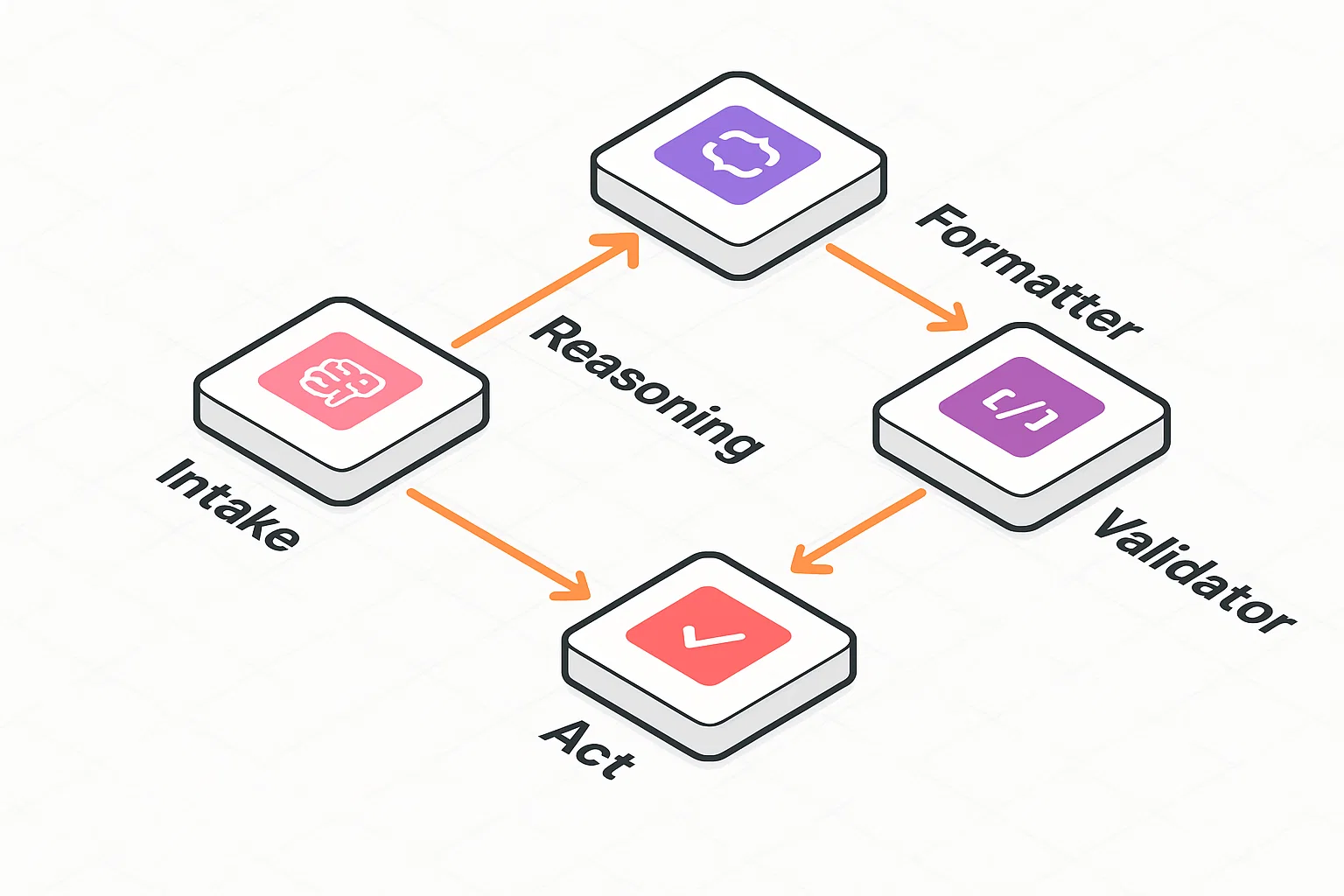
Power Move #3 — Design a JSON Schema that mirrors reality
Schema is your contract. If it’s fuzzy, your n8n AI workflow will leak edge cases everywhere. Model the real world, not your ideal world. Name things carefully, use enums, and include explanatory descriptions so future you knows why a field exists.
{ "$schema": "https://json-schema.org/draft/2020-12/schema", "title": "SupportTicketDecision", "type": "object", "properties": { "priority": { "type": "string", "enum": ["low","medium","high","urgent"], "description": "Human-perceived urgency mapped to SLA." }, "intent": { "type": "string", "enum": ["billing","bug","how_to","feature_request"] }, "actions": { "type": "array", "items": { "type": "string", "enum": ["reply_template","create_jira","refund","escalate","close"] } }, "summary": { "type": "string", "maxLength": 400 }, "metadata": { "type": "object", "properties": { "language": { "type": "string" }, "confidence": { "type": "number", "minimum": 0, "maximum": 1 } }, "required": ["confidence"], "additionalProperties": false } }, "required": ["priority","intent","actions","summary","metadata"], "additionalProperties": false }Use small, composable schemas across your n8n AI workflow. It’s easier to reason about, test, and reuse. If your LLM struggles, reduce optional fields and make the happy path obvious.
Power Move #4 — Separate “reasoning” from “formatting”
Don’t ask one prompt to do everything. In a mature n8n AI workflow, let a “Reasoning” node think in free-form (notes, chain-of-thought not persisted), and then a “Formatter” node takes that context and emits perfect JSON against your schema. This two-step flow massively improves accuracy and debuggability.
// Pseudocode: Reasoning → Formatter const notes = LLM({ system: "Analyze the ticket. Identify intent, priority, actions.", user: ticketText }); const json = LLM({ system: "Format strictly to the SupportTicketDecision schema. No extra keys.", user: notes }); // validate(json) → proceed Power Move #5 — Validate ruthlessly before touching APIs
A validator node is your last line of defense. If validation fails, don’t “hope” and push anyway—retry with a stricter prompt, a smaller schema, or a lower-temperature call. Your n8n AI workflow should only hit external systems with clean data.
// n8n Code node example const Ajv = require("ajv"); const ajv = new Ajv({ allErrors: true, allowUnionTypes: true }); const schema = $json("SupportTicketDecisionSchema"); const validate = ajv.compile(schema); const ok = validate(items[0].json); if (!ok) { throw new Error("Schema validation failed: " + JSON.stringify(validate.errors, null, 2)); } return items; Power Move #6 — Guardrails, retries, and backoff
- Retry budget: 2-3 attempts max with exponential backoff.
- Prompt hardening: Add “Return only JSON. No commentary.” and an example.
- Auto-repair: If JSON is malformed, attempt a small repair prompt (“Fix only brackets & commas”).
- Dead-letter queue: Route unsalvageable items to a review list.
Power Move #7 — Logs, traces, and prompt/version lineage
Every n8n AI workflow benefits from observability. Persist:
- Input hash, output hash, latency, tokens, model name/version
- Validation pass/fail and error reasons
- Which prompt version produced the output
With that ledger, rollbacks and A/B comparisons become easy instead of scary.
Power Move #8 — Data hygiene & security by default
Protect secrets with n8n credentials, never in plain nodes. Redact or hash PII before you send to a model. Decide what’s retained (and for how long). Your n8n AI workflow should treat privacy as a feature, not an afterthought.
Power Move #9 — Cost control & token budgeting
- Summarize early: Compress context to essentials before reasoning.
- Short outputs: Small JSON beats long explanations.
- Tiered models: Cheap model for formatting, stronger model for hard reasoning.
- Stop sequences: End generation at the JSON close brace.
Power Move #10 — Latency tuning & caching
Speed matters. Keep your n8n AI workflow snappy with:
- Parallelization: Fan-out independent sub-tasks.
- Caching: Memoize deterministic steps (like lookups, embeddings for stable docs).
- Streaming UI: If humans wait, show progressive results.
Power Move #11 — Deterministic branching with typed fields
Branch on enums, not vibes. Switch nodes that key on status, intent, or actions[] keep your n8n AI workflow predictable and testable.
Power Move #12 — Fallback models & “good-enough” paths
If the primary model fails schema twice, fall back to a conservative, smaller model with a stricter prompt. Or route to a simpler path that only tags intent and priority, leaving the rest for a human. Reliability beats perfection.
Power Move #13 — Human-in-the-loop review patterns
When stakes are high (refunds, legal, medical), pause and ask for thumbs-up. Your n8n AI workflow can DM a reviewer with a tidy summary and buttons: Approve / Edit / Reject. Keep the JSON attached so edits are structured.
Power Move #14 — Agents vs. chains (and when to choose)
Agents explore. Chains execute. If the space is well understood (e.g., convert emails to tickets), chains are perfect. If the path changes (unknown tools, novel docs), a constrained agent can help. Either way, the final mile of a n8n AI workflow should still be formatted JSON.
Power Moves #15-17 — Three field-tested playbooks
Playbook A: Support triage (intent → actions)
- Intake email/webhook → Reasoning summarizes issue.
- Formatter maps to
intent, priority, actions[]schema. - Validator → Branch: create JIRA, send template, or escalate.
- Notify Slack with a human-friendly message built from JSON.
Playbook B: Product catalog refresh
- Scrape vendor spec → Reasoning harmonizes attributes.
- Formatter emits strict product schema (
sku, title, attributes, price). - Validator → If new/changed → upsert DB & regenerate page copy.
- Log diffs for audit; cache identical SKUs.
Playbook C: Sales research brief
- Intake company name + domain.
- Reasoning compiles basics; Formatter outputs a
ResearchBriefobject. - Validator → push to CRM notes; Slack a summary to AE.
- Optional: create follow-up tasks based on
next_steps[].
Power Move #18 — Synthetic tests & golden datasets
Build a “golden” set of inputs and expected JSON outputs. Run them nightly. Your n8n AI workflow is alive—models, prompts, and data drift. Tests keep it honest and catch regressions before customers do.
Power Move #19 — Migration strategy: from prototype to prod
Start with a thin slice: one source, one schema, one action. Prove the loop. Then scale horizontally with more inputs and destinations. Freeze prompts per release, tag them, and ship like software. Because it is.
Power Move #20 — Governance, approvals, and rollbacks
Ship changes behind feature flags. Log every outbound action with the JSON that caused it. If something goes sideways, flip the flag, revert the prompt version, and replay safely. This discipline turns a n8n AI workflow into infrastructure, not an experiment.
Power Move #21 — What to build next
- A unified “Formatter” node library of your house schemas.
- A shared validator module + Ajv config.
- An internal gallery of example prompts and failure cases.
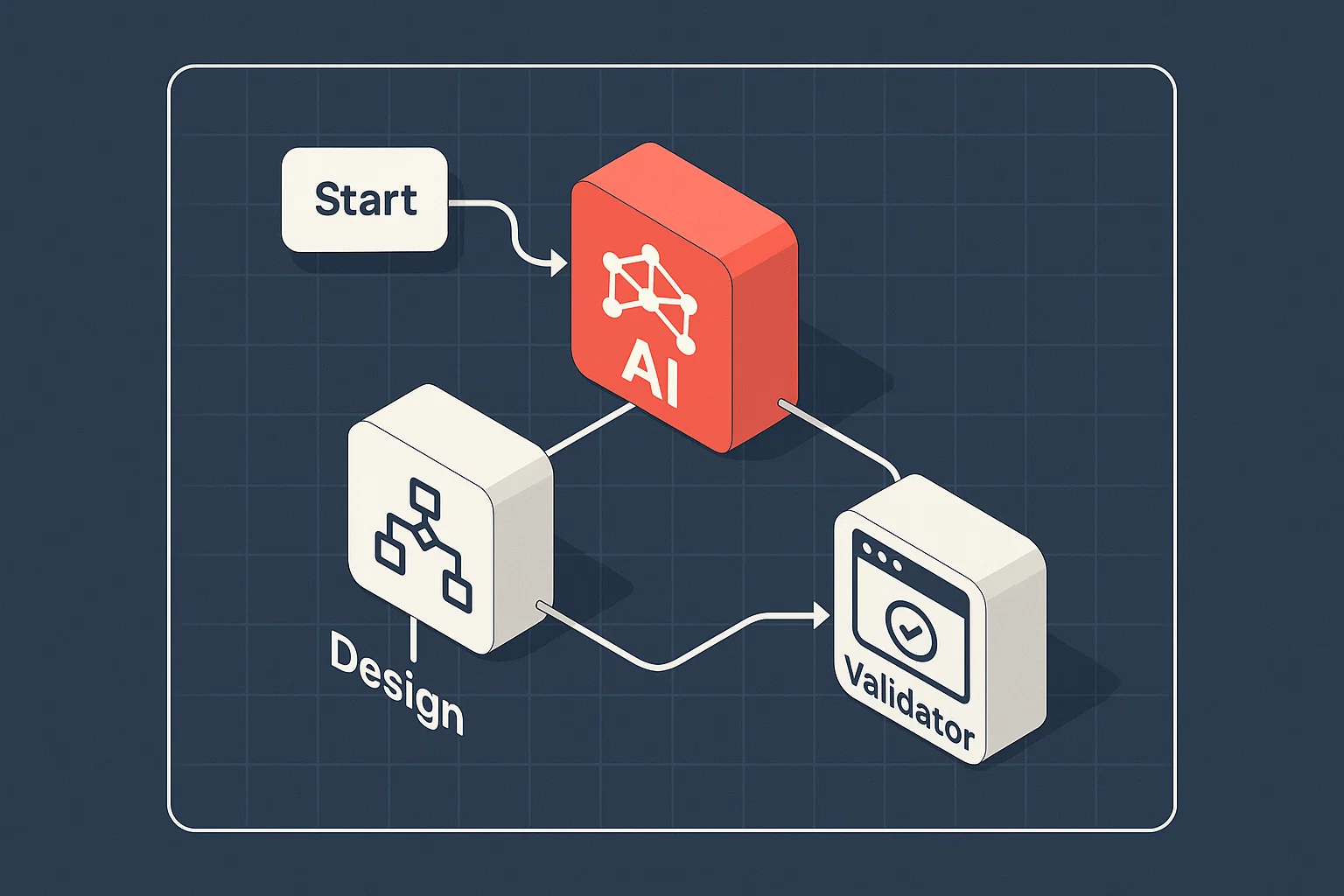
A quick personal anecdote
I once added a cheeky “💡 Tip:” line in a prompt. The model dutifully echoed it—inside the JSON. Validation failed, the queue piled up, and my phone buzzed at 2 a.m. I removed the flourish, split reasoning from formatting, and the n8n AI workflow ran clean for months. Tiny changes. Massive difference.
FAQ
How many nodes is too many?
Concise beats clever. Most n8n AI workflow graphs fit in 8-15 nodes. If you’re past 25, split a sub-flow and pass a slim payload between them.
Do I need a vector database for everything?
Nope. Start with a small knowledge file and only add embeddings when you see real retrieval misses. Your n8n AI workflow should remain lean.
Which model should format JSON?
A cheaper, deterministic model usually nails formatting. Save your strongest model for reasoning. The split often cuts cost by 40-60% while improving reliability across the n8n AI workflow.
What if the model keeps adding extra keys?
Show a minimal example, set additionalProperties: false, and say “Return only these keys.” If it still misbehaves, wrap with a repair prompt and a strict validator before the action nodes in your n8n AI workflow.
How do I keep humans in control?
Use gated branches: “needs_approval = true”. Send a Slack card with Approve/Reject buttons. Store the reviewer ID and timestamp alongside the JSON. That audit trail makes your n8n AI workflow enterprise-friendly.
Related & References
Internal Reads (exactly two)
External Reads
- n8n Documentation — Nodes, credentials, best practices.
- JSON Schema Learn — Solid grounding for your validators.
- Function Calling Guide — Helpful for structured outputs.
Final checklist for your next build:
- Does your n8n AI workflow emit JSON first and prose second?
- Is every action gated behind validation?
- Can you explain a production incident from logs in 5 minutes?
- Do you have a fallback path and a dead-letter queue?
Run it once. Observe. Tighten. Run it again. That’s how your n8n AI workflow graduates from “cool demo” to dependable, money-making automation.

 FoxDoo Technology
FoxDoo Technology